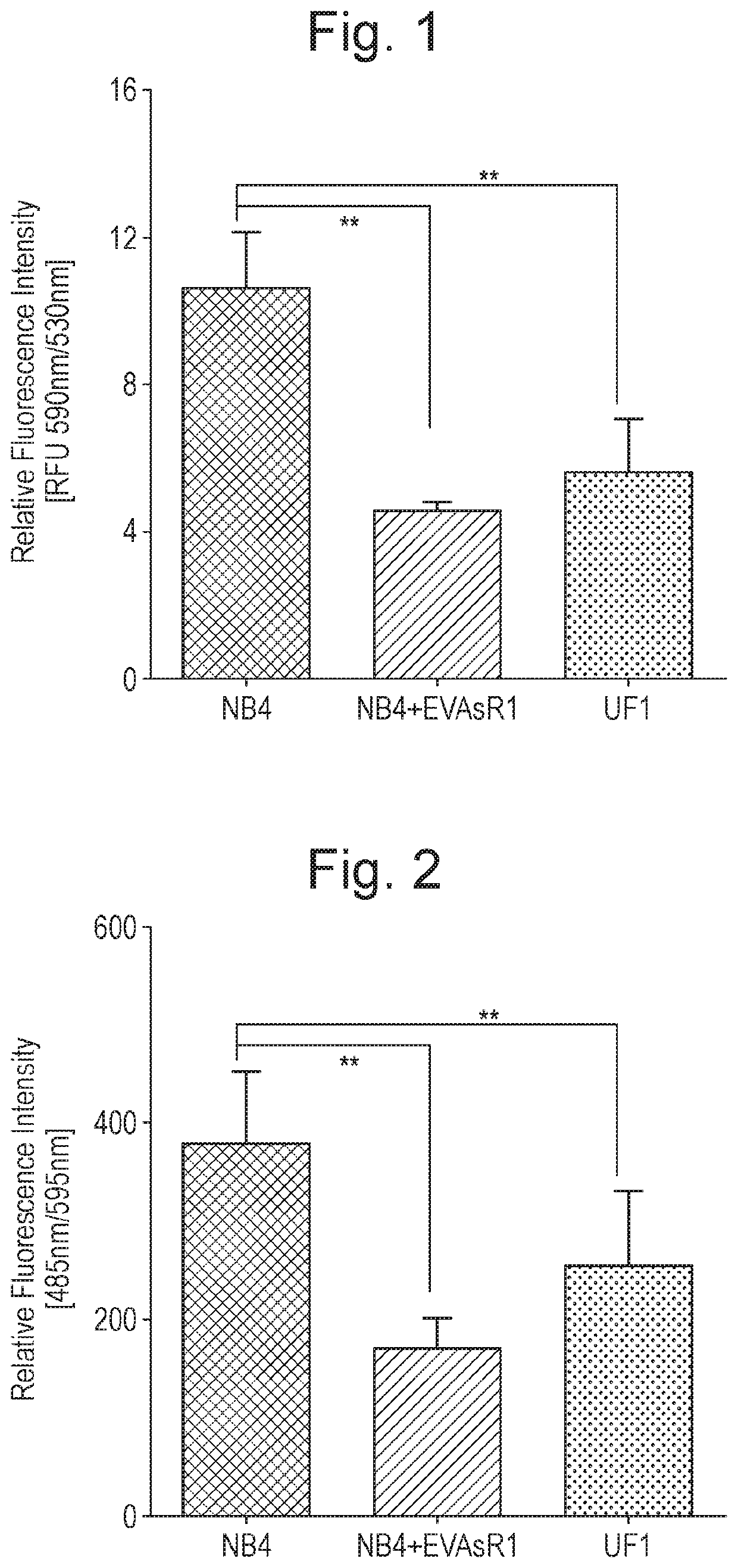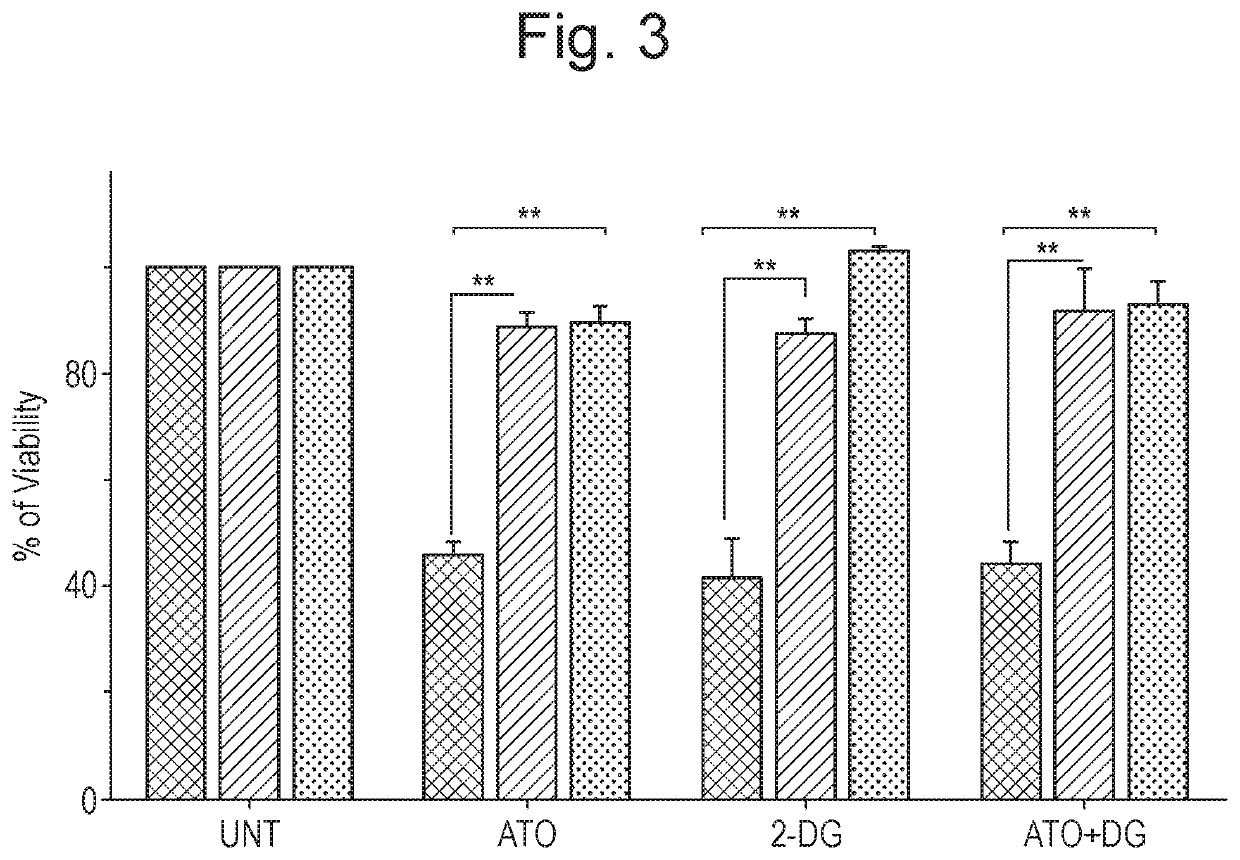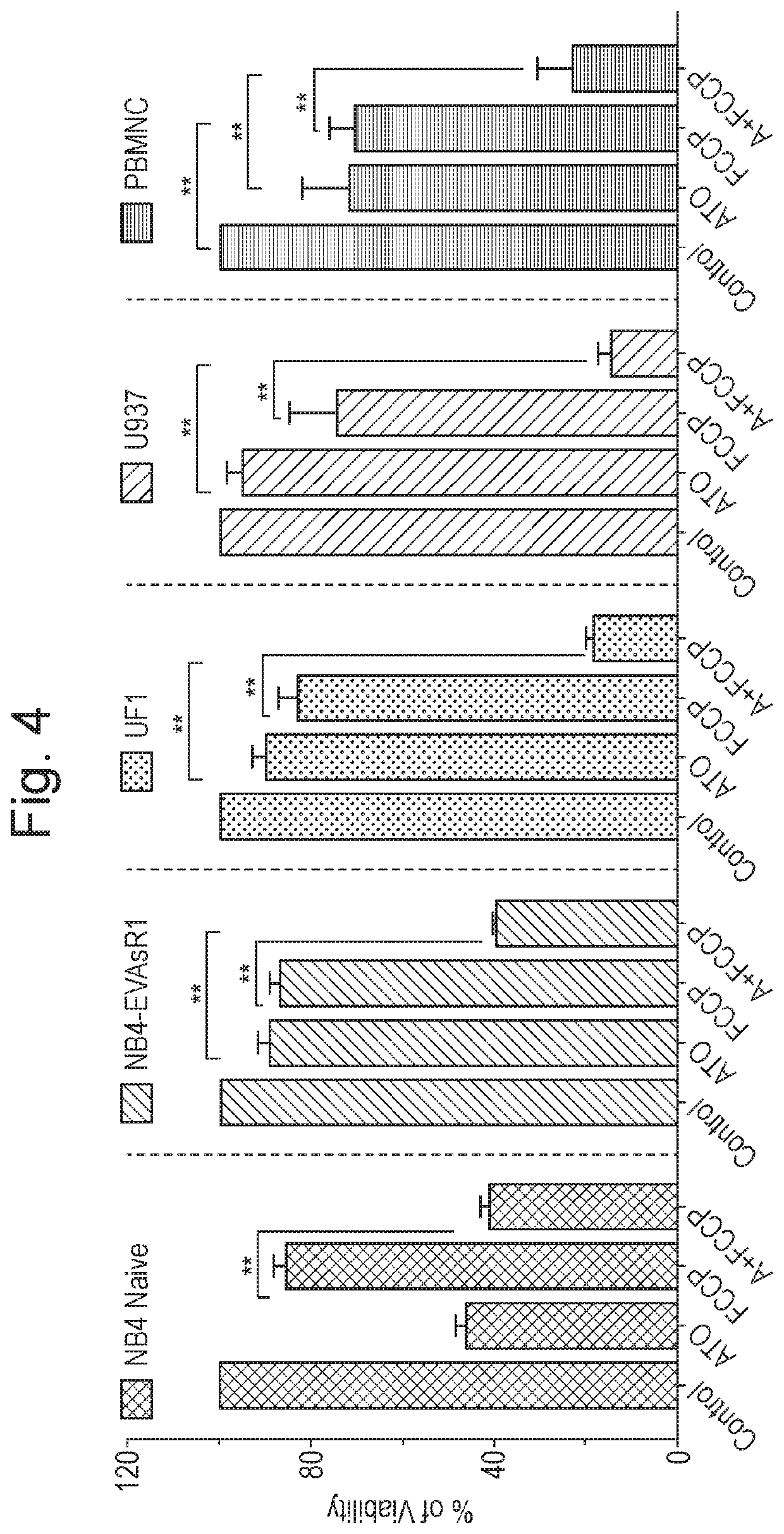Combination Therapy for Treatment of Leukemia
a combination therapy and leukemia technology, applied in the field of leukemia treatment, can solve the problems of large elderly patients, inability to receive the standard intensive chemotherapy regimen, and major cause of mortality, and achieve the effect of increasing the concentration of intracellular iron
- Summary
- Abstract
- Description
- Claims
- Application Information
AI Technical Summary
Benefits of technology
Problems solved by technology
Method used
Image
Examples
example 1 (
Reference)
Introduction
[0116]Metabolic reprogramming of cancer cells is one of the hallmarks of cancer and there is increasing evidence to suggest that metabolic plasticity of the cancer cells drives drug resistance in solid tumours. The malignant cells have been reported to be relying on glycolysis for their cell survival and proliferation, which is a less energy producing pathway in comparison to mitochondrial respiration. This behaviour of cancer cells is known as the Warburg effect: aerobic glycolysis where the cancer cells undergo glycolysis even in the presence of an ample amount of oxygen.
[0117]Malignant cells that are resistant to the conventional agents may be utilizing the mitochondrial respiration for survival, and agents which disrupt the metabolic adaptation have been reported to overcome resistance when combined with conventional agents. For example, comprehensive proteomics and metabolic studies of malignant cells treated with arsenic trioxide (ATO) have revealed that ...
example 2 (
Triple Combination of Artesunate, Arsenic Trioxide and Iron Complex (Hemin))
[0122]The experiments described in Example 1 were repeated, but using the iron complex hemin instead of delta-aminolevulinic acid.
[0123]The results are shown in FIG. 8. It was observed that ART in combination with hemin resulted in a significant reduction in the viability of AML, cells. The viability was even more significantly reduced in triple combination with ATO. The apoptotic activity was found to be abrogated by an iron chelator (Deferoxamine; “DFO”). Hemin and DFO as single active agents did not affect of the viability of this ATO-resistant cell line significantly.
example 3 (
In Vivo Studies)
Summary
[0124]In vitro work suggested that there is a significant synergy between arsenic trioxide and artesunate. The effect of the combination was further enhanced by adding an iron enhancing agent such as alpha-aminolevulinic acid (ALA) or hemin. To further validate this in vitro observation, in vivo studies were performed on a mouse model of acute promyelocytic leukemia. The initial experiments with alpha aminolevulinic acid (ALA) demonstrated that there was significant toxicity related to the drug and its formulation in mice and hence it was opted to further evaluate this combination with hemin. In the absence of any existing literature on the use of hemin in the treatment of malignancy (cancers), the hemin dosage schedules from non-malignant studies (Lu, X., J. Chen-Roetling, and R. F. Regan, Systemic hemin therapy attenuates blood-brain barrier disruption after intracerebral hemorrhage. Neurobiology of disease, 2014. 70: p. 245-251) were adapted for these in vi...
PUM
 Login to View More
Login to View More Abstract
Description
Claims
Application Information
 Login to View More
Login to View More - R&D
- Intellectual Property
- Life Sciences
- Materials
- Tech Scout
- Unparalleled Data Quality
- Higher Quality Content
- 60% Fewer Hallucinations
Browse by: Latest US Patents, China's latest patents, Technical Efficacy Thesaurus, Application Domain, Technology Topic, Popular Technical Reports.
© 2025 PatSnap. All rights reserved.Legal|Privacy policy|Modern Slavery Act Transparency Statement|Sitemap|About US| Contact US: help@patsnap.com



